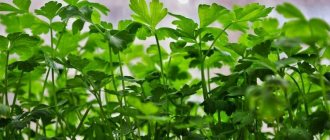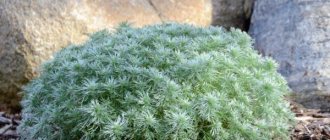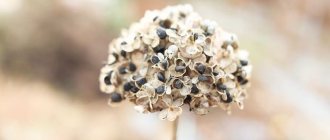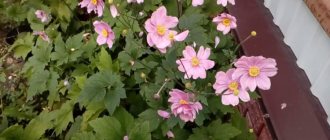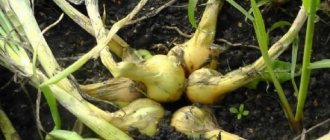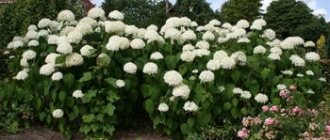Description of the finest feather grass
Feather grass (other names: Mexican feather grass, Argentine needle grass, silky thread, cleaver) is a deciduous grass up to 60 cm high, forming a compact, vertical bunch of glossy, thread-like, silver-green or pale yellow-green, very mobile stems, crowned in summer with narrow, fluffy, 4–12 flowering panicles. They consist of 60 – 480 pale yellow or silvery whiskered spikelets, in which golden seeds ripen by the beginning of autumn. In areas with warm climates, feather grass grows as a perennial plant. In areas with cold winters it is an annual plant.
What is feather grass like?
Despite the fact that quite a few varieties of feather grass are known, only a few of them are used for landscape design (photos and descriptions are attached):
- Feather grass is the most frequent guest of gardens and flower beds. This is no accident, since he is an original inhabitant of the Russian steppes and is accustomed to all the vagaries of our climate. It reaches a height of about 90 cm. It blooms in May-June. Overwinters without shelter. The stems of the plant are smooth, the panicles are narrow,
- Feather grass is beautiful - very similar to feather grass, but unlike it, it has denser panicles, which, under their own weight, bend towards the ground, forming a smooth bend,
- Feather grass "Fluffy Cloud" is a compact bush no more than 50 cm high, often lower. Its spikelets are erect and have a lush shape, which is how this plant got its name,
- The finest feather grass comes from Mexico, so winter temperatures below 15° are contraindicated for it, as are high temperatures (over 25°). Grown as an annual. The leaves of this plant are quite hard, the spikelets are whitish with a silvery tint. Bush height - about 80 cm,
- Feather grass “Fireworks” is a perennial plant about 80 cm high; in our climate it can be an annual plant. This feather grass received its name due to the leaves changing their color, which from dark green in the spring at the end of summer become golden-pink, and in the fall they become almost red or brown.
- Zalessky feather grass is from the genus of feathery feather grass. It grows on low-humus soils and is also often found on solonetzes. The leaves are covered with hairs and pimples, the panicle is loose and slightly pubescent,
- Feather grass “Volosatik” is a plant about 60 cm high. It differs from other feather grasses by its thin and long spine (about 20-25 cm), which resembles horsehair. The color of the spikelet is silver-green,
- Lessing's feather grass is about 60 cm high. The leaves are slightly rough on the outside, curling when dry. The panicles have a purple tint, as can be seen in the photo of the plant.
Features of the finest feather grass
The species adapts well to a wide range of conditions - heavy clay or sandy soil, moderate salinity, slightly acidic or alkaline pH, drought. Thrives in sunny areas in coastal areas with strong winds, but does not tolerate areas with poorly drained soils. In nature it reproduces by seeds. In culture, when the plants reach optimal density, they can be propagated by dividing the bushes.
In some states in the southwestern United States, northern Mexico, Argentina, Chile, and Australia, the plant is considered invasive and classified as a weed. However, when taken under control in a closed, fenced yard, feather grass does not pose a threat to the local ecology and landscape. It is resistant to pests and is not very popular with herbivores.
Growing from seeds
The easiest way to propagate feather grass is by dividing the bush when it reaches good density. However, if it is not yet in the garden, then all that remains is to sow the seeds.
Growing feather grass from seeds does not require any special knowledge or effort. Varieties that grow in the climate of our country can be safely sown before winter - that is, in the fall directly into the ground in a permanent place. To do this, make a hole about 3 cm deep, moisten the soil and pour 3-4 seeds into it. In the same way, sowing is carried out in late April-early May during spring planting.
However, seeds are not always able to survive the winter or withstand spring frosts. Therefore, in order for the feather grass to decorate the garden already this season, it is better to sow it in seedlings. In addition, heat-loving varieties are grown only as seedlings.
The soil can be purchased at the store or prepared in the fall from your garden. Feather grass is not a demanding plant, so it has no special preferences for soil. Rather, he prefers not too fertile soil. You can sow the seeds directly into separate cups, since the feather grass sprouts are thin and fragile and can be easily damaged when planted from a common container.
Most popular varieties
Variety 'Ponytail'. An upright bush reaching 60 cm in height, with erect stems and thread-like leaves. Thick panicles visually really look like horse tails. Spikelets are single-flowered, large. Sand-colored inflorescences become “noble gray” as they mature. Combined with bluish-green leaves, the plants look mesmerizing when planted tightly together, responding to the slightest breeze. In some countries the variety 'Ponytail' is sold under the name 'Angel Hair'.
Variety 'Wind Whispers'. A rare, graceful perennial with thin, strong stems reaching 70 cm in height. It sways gracefully in the wind, and its silky, dense panicles with a purple tint glow brightly when they catch the sunlight. The leaves are hard, narrow, rough, with dense bristles.
Other types of feather grass with photos and names
The genus has more than 300 species, about 80 representatives can be found in our area. Let's look at the species that are popular in gardening.
Feather grass Stipa pennata photo
Cirrus - most often grown in gardens. The height of the bush is 40 cm. Long smooth leaves end in a tuft of hairs.
Feather grass Stipa capillata photo
Hairworm - leaf plates of a grayish tint are rolled into a tube. The awns are fleecy, their length reaches 18 cm. The bush is 40-80 cm high.
Feather grass Stipa dasyphylla photo
Hairy-leaved - in the natural environment it is distributed not only in the steppes, it can be found on rocks. The leaf blades are rolled into a tube with a diameter of about 2 mm; the leaves are covered on all sides with thin soft hairs. The length of the awn is about 40 cm.
Far Eastern - common in China, Japan, Siberia. The tallest type: the majestic stems stretch up to 1.8 m. The width of the linear-lanceolate leaves is 3 cm, they are glossy. The awns are half a meter long.
We suggest you read: When to plant turnips
Feather grass Stipa Tenuissima photo
The thinnest one - originally from Mexico, in our latitudes it is cultivated as a summer plant. The height of the plant is 80 cm. The leaf blades are hard.
Applications and advantages of the finest feather grass
Feather grass is a popular decorative type of grass used in landscape and garden design. At the prestigious Chelsea Flower Show, which is held annually by the British Royal Horticultural Society (RHS) in the London suburb of Chelsea, feather grass is used in almost every display. Its advantages:
- grows quickly;
- Ideal for modern gravel and natural gardens;
- looks great in rockeries, mixborders and borders;
- can decorate any flower garden;
- Great for containers;
- blooms from the first year of planting;
- remains decorative for 9 - 10 months a year, therefore it has great potential to be an accent plant in the garden throughout this period;
- prevents active growth of weeds;
- brings airiness, movement and smart lightness to garden design;
- inspires and awakens the imagination of garden designers and amateurs to create unique, amazingly beautiful landscape and flower arrangements, including bouquets;
- maintenance efforts are low;
- drought-resistant, does not require additional fertilizing;
- practically immune to disease.
The plant perfectly coexists with other natural inhabitants of meadows and steppes: poppies, cornflowers, fescue, heathers, daisies and echinacea.
Looks stylish in combination with small-flowered and climbing roses, other ornamental shrubs, such as barberry, and small conifers.
Cut and dried feather grass stems can be a leading or additional leitmotif when creating floral arrangements of dried flowers, bringing harmony to them that is unsurpassed in its simplicity. It is not difficult to prepare them for these purposes. Feather grass is cut at the time of its active flowering and hung in small bundles with panicles down in a dark, cool, well-ventilated room.
Feather grass - fashion trends in landscape design, garden in the “prairie” or “naturgarden” style
Feather grass is a fairly well-known plant that belongs to the cereal family. It is a grass from 30 cm to a meter high, with a short rhizome (not creeping) and a rather dense bush.
The feather grass plant is perennial and reproduces by seeds. In nature, there are about 300 species of feather grass . About 80 of them grow in our country.
Under natural conditions of the steppes it often forms dense turf, but due to active agricultural activity it is now rare.
Feather grass leaves are thin and hard, reminiscent of wire, sometimes even twisted into a tube. The stems are erect and also thin. The feather grass produces a flower in the form of a dense paniculate inflorescence-spikelet at the end of May.
It has a very original structure, in which the grain is located in the lower flower scale, which has a callus (pointed apex) and an awn.
The bristles on the spikelet are located in the opposite direction to the awn, and the awn itself is twisted into a spiral.
Ripe seeds are spread by the wind. But there is another method, due to the unique structure of the spikelet. Under the influence of dew or rain, the stems of the feather grass take root to the ground, the spiral-shaped awn straightens slightly from moisture, and, like a corkscrew, is screwed into the ground. The scales prevent her from getting back out. Then the spikelet dries out and breaks off, and the seeds remain in the soil.
Due to its modest and natural beauty, feather grass is often found in gardens and flower beds (what feather grass grass looks like can be seen in the photo below). In addition to its natural charm, this plant has another important advantage - unpretentiousness.
Of course, this does not apply to all varieties, since some of them, due to different natural growing conditions, require special care in the climate of our country. With the help of feather grass, you can create spectacular compositions that imitate the natural combinations of steppe plants.
Its thin spikelets are mesmerizing, fluttering in the wind with smooth lines. It looks especially beautiful when it is planted in a large dense group.
To create a naturgarden (natural garden) , next to the feather grass it is recommended to plant those plants that will look natural in combination with it, as if they were to be seen in a meadow. These are, of course, other cereals: fescue, foxtail, miscanthus and others.
Also looking impressive next to scabiosa feather grass, especially in bright, rich shades, are poppies, heather, sage, hyssop, chamomile, echinacea, decorative onions or garlic . Moreover, feather grass can act both as the basis of a composition and as a background for more striking opponents.
Recently, landscape designers have been coming up with new and original combinations, and now cereals are favorably highlighting the beauty of rose gardens. Moreover, they look more advantageous next to climbing roses or varieties with miniature flowers.
Feather grass will fit perfectly into the plant environment of the pond next to heucheras, irises, sedges and reeds. Although it is better to place it not at the very edge of the water, since this is not a coastal plant, but, for example, along the path to the pond.
Feather grass can grow in a dense strip along a board fence , filling the space between the picket fence, and thus emphasizing the division of garden space. It will look no less beautiful next to a fence or near pergola pillars.
https://www.youtube.com/watch?v=fHM0E2OZmsY
Despite the fact that feather grass is a steppe plant, it can be planted next to ornamental bushes, for example, Thunberg barberry or turf. It harmonizes no less beautifully with some conifers, especially dwarf varieties. Therefore, feather grass is quite appropriate on an alpine hill.
The use of feather grass in landscape design is not limited to the above, so designers continue to delight the gardener with new ideas for beautiful compositions.
Feather grass in the garden. Signs
Like many other plants, feather grass has its own halo of signs and beliefs.
For example, it is generally accepted that this herb cannot be stored in the house, since it is also called widow’s grass, and if it is in someone’s home, he will become a widow.
This belief is connected with the fact that in the distant past, the raids of nomads occurred precisely at the time when the feather grass was blooming, and people began to identify the spikelets of the feather grass with the hair of mothers and wives gray from sorrow.
However, there is also a belief that feather grass is a sacred plant of the spirits of the steppes, and if a person hides a bunch of feather grass under his shirt, the spirits of the steppe will take him under their protection and cleanse him of past adversities.
This means that it is better not to place feather grass in the house, but it is quite possible to grow it in the garden!
Interesting things about feather grass
- The paniculate stem of living and dry feather grass can serve as a kind of natural and home barometer. Brushes from awns - sharp thin processes in the spikelet, coming from the seeds, are very hygroscopic and sensitive to changes in air humidity. They curl into spirals in clear weather, and straighten before rain.
- In folk medicine, decoctions and infusions of feather grass leaves and awns are used to treat paralysis caused by stroke, thyroid diseases, prostate adenoma, and rheumatism. But you need to strictly follow the dosage of preparing and taking drugs, as you can get poisoned.
- In some cases, feather grass is popularly called “widow’s grass”, in others – “protector grass”. This is connected with the history of our region, when bloody battles with nomadic tribes unfolded on its steppe expanses, during which our warrior-defenders died.
- Various superstitions are also associated with feather grass. It is believed that if an armful of feather grass is brought into a house, this can bring misfortune to the family living in it.
- Young feather grass is suitable as food for animals. However, during flowering it becomes poisonous to sheep and goats. In late summer, horses and cows that are grazed in areas where feather grass grows may develop “feather grass disease.” Ripe plant awns cut their points into the throats of animals, causing inflammatory processes in them that are difficult to treat, and can even lead to death.
- Biologists claim that feather grasses save steppe soils from destruction (erosion) caused by the wind and contribute to the formation of black soil in it.
- Fibers of some types of feather grass, in particular S. tenacissima, used for weaving cords, bags, baskets, fashionable light summer shoes (espadrilles), making thin, high-quality paper for rolling cigarettes and for book production.


